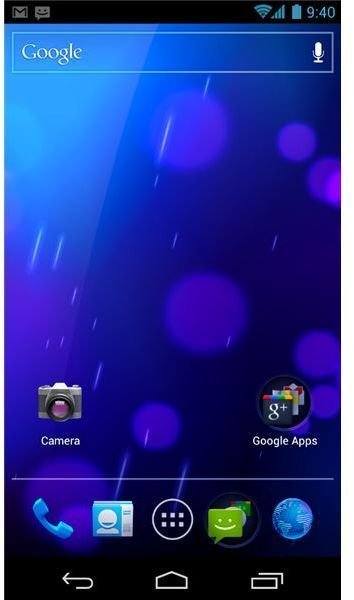Android 4.0 from a Developer's Perspective
Barely a year goes by without the two main mobile phone platforms, Android and iOS, releasing upgrades that allow users to enjoy additional features while providing enhancements to the platforms that app developers can take advantage of.
In late 2011 we’ve had the release of iOS 5, Windows Phone 7.5 and Android 4.0, each of which enhances the previous versions of the respective platforms. These updates allow developers the chance to provide a new generation of apps that can offer a whole new dimension to the end users.
All of this might seem pretty much par for the course, but in the case of Android a whole new raft of tools has been made available mainly due to Android 4.0 Ice Cream Sandwich being a combined operating system for use on both tablets and mobile phones. Therefore this new release combines elements from Android 2.3 Gingerbread and Android 3.0 Honeycomb.
Notifications and Multitasking on Phones and Tablets
The key thing to be aware of with Ice Cream Sandwich is that the platform is for phones and tablets, rather than one or the other. By building a universal OS, the Android developers have been able to save time and avoid fragmentation across device types.
One of the advantages app developers have is in the provision of improved notifications and multitasking on Android 4.0. This will enable much slicker transition between different apps, whereas notifications can be used to interrupt running apps to switch to those providing the new information. As such, new apps that are in development will need to be designed to handle these changes.
Another advantage of Android 4.0 that might prove useful to developers is the inclusion of pre-programmed responses to emails, text messages and so on. Any application that requires access to messaging services should have access to this tool as well, and there is every chance that such responses can be used in other ways.
Connectivity and Data Usage Monitor
A couple of very useful tools for end users and developers alike are the new connectivity options. The ad hoc wireless tool Wi-Fi Direct is likely to prove extremely useful to developers, as is Beam, a near field wireless data exchange similar to that found on the Nintendo DS. There are many ways in which these tools could prove useful, from local multiplayer gaming to data sharing and much more.
Meanwhile the provision of a data usage monitor in Android 4.0 will prove useful to anyone with a restricted data usage plan, while the new calendar-based API, Calendar Intents, offers a new way to access the calendar from any app. There’s no reason why a new app shouldn’t combine both of these tools…
Acceleration and Upgrades
Sadly, it’s not all good news when it comes to Ice Cream Sandwich for developers. At present, if you don’t own a test device then certain things cannot be achieved. One of these is to take advantage of a hardware acceleration feature that has been introduced from Android 3.0 Honeycomb. Without an Android 4.0 device this cannot be tested (more on that below) effectively.
Most interestingly, however, is the news that the vast majority of current Android devices cannot be upgraded to the new operating system. Is Android cutting loose from accusations of platform fragmentation? Quite possibly, but this decision presents a massive headache for developers, who could end up supporting two versions of the same app. Moreover, it wouldn’t be effective to discard either the new version of Android (which is likely to grow) or the old versions (which are likely to stay in use for a very long time).
Hey, Where Are the Ice Cream Sandwiches?
Despite the positives, there is one additional downside to developing for Android 4.0 Ice Cream Sandwich – a lack of physical devices!
While it is all very well constructing an app or game and testing it in the SDK emulator, nothing beats the ultimate end user test of loading up the app on a genuine device and finding out what works and what doesn’t. As handsets– and with Android 4.0, screen sizes and interface methods – vary, there are plenty of good reasons to be able to use an app in the same way an end user might. Issuing buggy apps is no good for developers, for Android itself and certainly not the Market.
As things stand, the first Android 4.0 device, the Samsung Galaxy Nexus, is launched first in Asia, rather than an international release. This can only result in a slow release of apps for the new platform, something that helps no one but Apple…
References
- Image credit: Wikimedia Commons/SF007
- Krill, Paul. “Android 4: Developers praise the new UI and APIs”, http://www.infoworld.com/d/mobile-technology/android-4-developers-praise-the-new-ui-and-apis-177587?page=0,1
